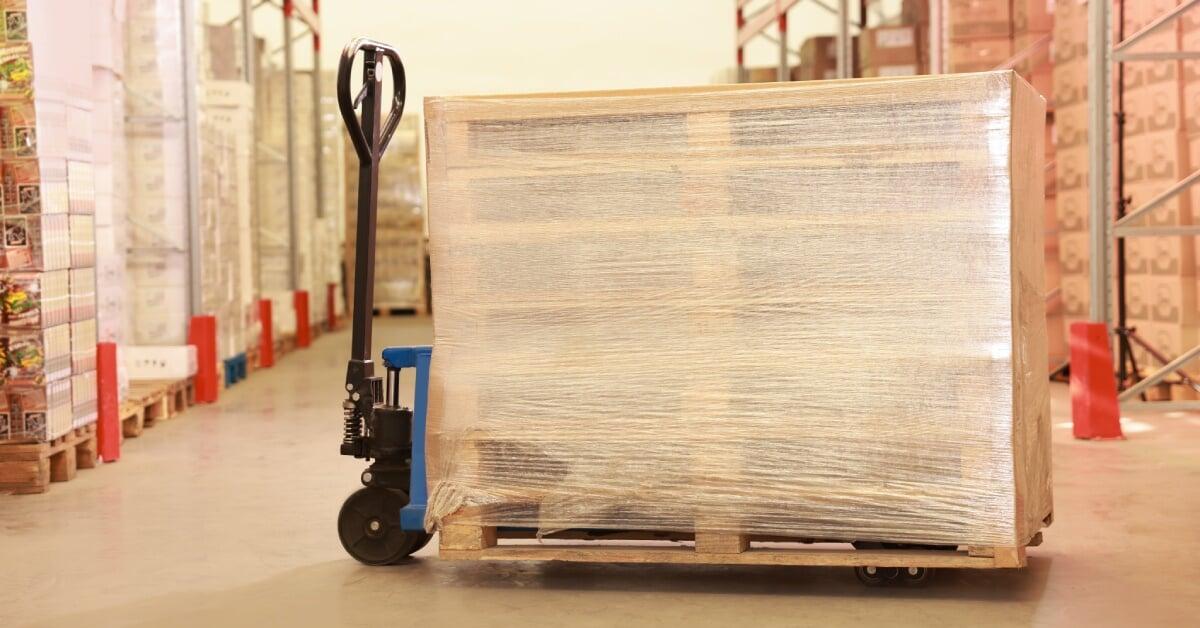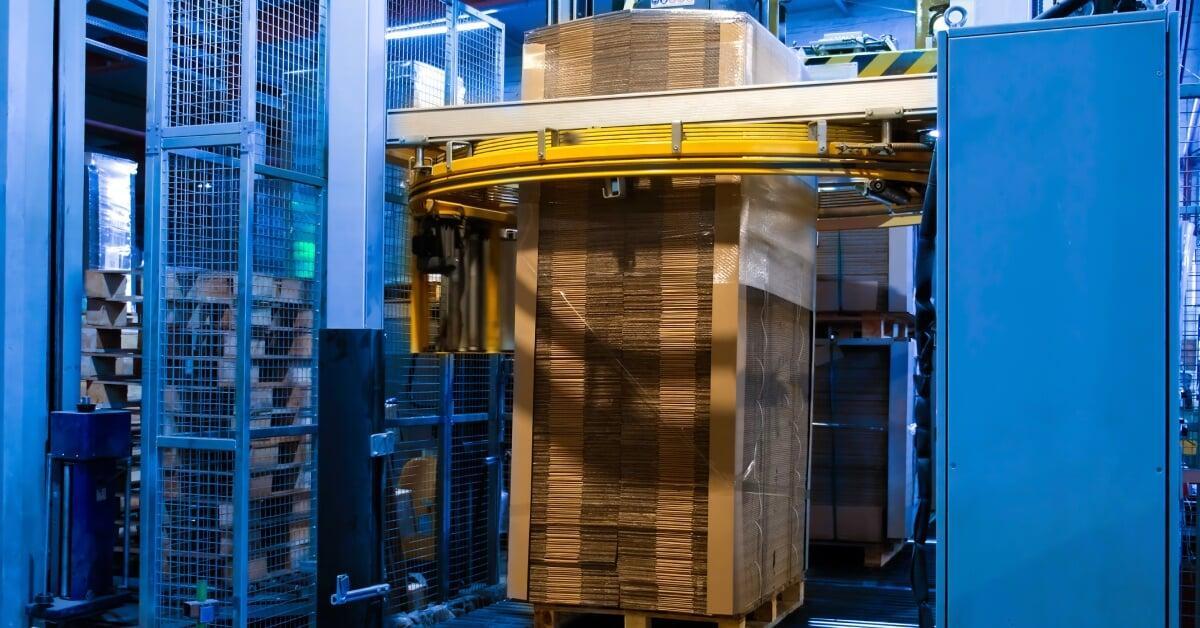
Every warehouse manager faces a critical decision when it comes to securing loads for shipment: what stretch wrapping method is right for their operation? Your choice between manual, semi-automatic, and automatic systems impacts everything from labor costs to film waste. The wrong decision can lead to damaged goods, frustrated workers, and blown budgets.
Secure loads keep warehouses organized and can even reduce the risk of worker injuries. That’s why the method you choose for stretch wrapping has a major impact on overall efficiency. The best choice for your operation depends on your facility’s needs, volume requirements, and long-term goals. Let's explore your options to help you make the best choice for your warehouse.
Understanding the Basics of Stretch Wrapping
Stretch wrapping involves applying plastic film around palletized loads to create a secure, stable unit that can withstand the rigors of transportation and storage.
However, the purposes of stretch wrapping go beyond simple containment. Your wrapped loads gain protection from dust, moisture, and tampering. The film also prevents load shifting during transport, which reduces product damage and keeps customers happy.
You'll encounter three main types of stretch film in your operations:
- Cast film offers excellent clarity and quiet unwinding, making it ideal for high-speed applications.
- Blown film provides superior puncture resistance and load-holding power, perfect for irregularly shaped or sharp-edged products.
- Pre-stretched film comes already stretched near the limit, which reduces the force needed during application and minimizes film usage.
Manual Stretch Wrapping
Manual stretch wrapping puts the power directly in your workers' hands. Operators walk around the pallet, applying film using handheld stretch wrap dispensers that help control tension and reduce physical strain. Quality dispensers feature ergonomic handles and brake systems that prevent back injuries and improve wrap consistency.
The advantages of manual wrapping center on flexibility and low startup costs. You can wrap any size or shape of load, rather than being limited by your machine’s constraints. Your team can adjust wrapping patterns on the fly to accommodate special requirements. Plus, the initial investment is minimal since you only need to invest in dispensers, minor training, and stretch film.
That said, labor costs add up quickly when workers spend substantial time on each load. Wrap quality varies between operators and shifts, leading to inconsistencies. Film usage tends to run higher because it’s difficult to achieve optimal stretch levels with manual application methods.
Manual stretch wrapping works best for operations wrapping fewer than 15 loads per day. It also suits warehouses handling irregularly shaped items that machines can't accommodate. If your loads vary dramatically in size or you need maximum flexibility, manual wrapping might be your best option.

Semi-Automatic Stretch Wrapping
Semi-automatic machines bridge the gap between manual labor and full automation. These systems come in three main configurations:
- Turntable wrappers that rotate the load while the film head stays stationary
- Rotary arm machines where the film head moves around a stationary load
- Robot wrappers that move around the pallet
One of the key benefits of semi-automatic systems is that they can wrap more consistently than manual options because machines can apply film using precise tensions and overlap patterns. Your workers will also experience less fatigue since they only need to position loads and start cycles. If you invest in a robot wrapping machine, you won’t need to use as much film because of its pre-stretching feature.
However, semi-automatic systems do require higher upfront investment compared to manual methods. You'll also lose some flexibility since machines work best with standard load sizes. Maintenance becomes a consideration, though modern machines require minimal upkeep.
These systems excel in operations wrapping 15 to 50 loads daily with reasonably consistent dimensions. They work particularly well when you need improved wrap quality but can't yet justify the cost of an automatic wrapping machine.
Automatic Stretch Wrapping
Automatic systems represent the pinnacle of stretch wrapping efficiency. These conveyorized units can easily be integrated into your material handling workflow. An automatic stretch wrap machine can handle continuous operation with very little human intervention.
The advantages of automatic systems compound over time. Throughput increases dramatically, often handling dozens of loads per hour. Automatic machines can also greatly reduce your facility’s labor requirements. These machines can also optimize film usage thanks to precise pre-stretching and tension control. Many systems can even provide data collection capabilities that help you track performance and identify improvement opportunities.
The main drawback is that automatic systems require the highest initial investment and most complex installation. Plus, integration with existing conveyor systems can be a complicated process that requires careful planning. These machines often take up a lot of space and require more sophisticated maintenance protocols.
High-volume operations wrapping over 50 loads daily see the greatest benefit from automated machines. Warehouse operations that use standardized processes and have consistent load dimensions will see the most benefit from automatic machines.

Factors To Consider When Choosing a Method
Volume and Throughput
Your daily wrapping volume serves as the primary decision factor. Count your average loads per day, including peak periods and seasonal variations. Manual methods handle low volumes efficiently, while high volumes demand automation to maintain productivity.
Load Characteristics
Examine your typical loads carefully. Standard pallet sizes and shapes favor machine wrapping, while irregular or oversized items might require manual flexibility. The weight of each load also influences machine capabilities, which is why unstable products need special wrapping patterns that machines can handle more consistently.
Budget
Consider both the initial investment and ongoing costs. Manual systems cost less upfront but consume more labor and film over time. A simple return on investment calculation might show that a semi-automatic wrapper will pay for itself within two years through labor savings and reduced film waste. Make sure to factor in maintenance costs, training expenses, and potential productivity gains when evaluating options.
Space Constraints
You’ll need to measure your available floor space and consider traffic patterns before selecting a stretch wrapping machine. For instance, turntable wrappers need clearance around the entire machine, while rotary arm units require overhead space. Robot wrappers offer flexibility in tight spaces but need clear pathways to move between pallets.
Labor Availability and Cost
Calculate your current labor costs for stretch wrapping activities. If you're paying workers substantial overtime or struggling to find reliable help, automation could be a solution. For example, replacing two full-time wrapper positions with a semi-automatic system might save enough in annual wages to justify the equipment cost.
Making the Right Choice for Your Warehouse
Choosing what stretch wrapping method is right for your operation comes down to matching your warehouse needs with the capabilities of each approach. Low-volume operations with varying load dimensions can benefit from the flexibility of manual wrapping, while medium-volume warehouses often find that semi-automatic systems balance cost and performance. Facilities that process a high volume will typically benefit the most from automatic wrapping methods.
Your equipment decision impacts daily operations, worker satisfaction, and bottom-line results. Take time to analyze your volume patterns, load characteristics, and budget constraints to find the right stretch wrapping method.
If you’re not sure which stretch wrapping machine would be the best fit for your operation, reach out to PackSmart today. We’re a full-service company committed to helping businesses of all sizes improve their packaging procedures.ively, when you select a text box.
